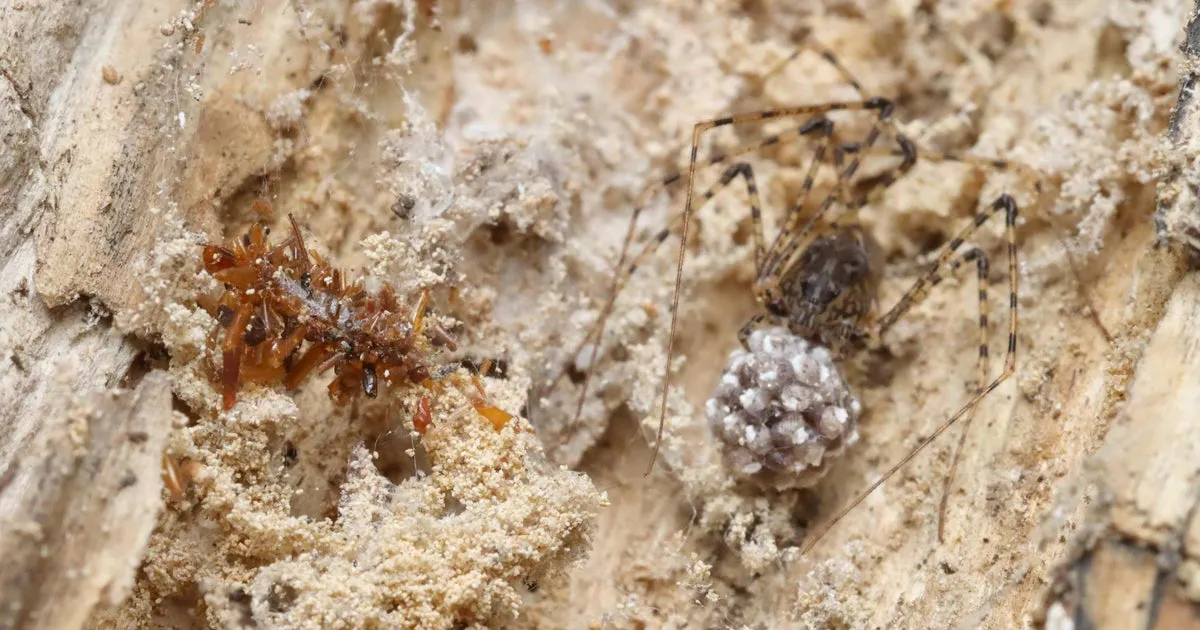
A new carnivorous caterpillar identified on the Hawaiian island of Oahu has been intriguingly dubbed the Bone Collector. This unique insect is notable for its peculiar habit of adorning its silk case with the remains of its prey, primarily insects trapped in spiderwebs. The findings were published on Thursday in the prestigious journal Science, shedding light on this remarkable and macabre behavior.
The Bone Collector caterpillar exhibits an unprecedented practice among meat-eating caterpillars. It not only feasts on insects ensnared in spiderwebs but also decorates its portable larval home with the body parts of these victims. According to study author Dan Rubinoff from the University of Hawaii at Manoa, while there are other carnivorous caterpillars known for their bizarre behaviors, this one stands out due to its unique method of survival.
Researchers believe that the caterpillar’s silk case, adorned with remains, may serve as a form of camouflage, enabling it to consume the spider's trapped meals without drawing attention to itself. This clever adaptation highlights the caterpillar's remarkable evolutionary strategy.
The term Bone Collector is reminiscent of Jeffery Deaver's 1997 crime novel and the subsequent 1999 film featuring Denzel Washington and Angelina Jolie. Rubinoff remarked that the name seemed apt given the caterpillar's behavior, adding a touch of humor since arthropods, including this caterpillar, do not possess actual bones.
Native to Hawaii, many caterpillars utilize silk glands to create protective cases embellished with lichen, sand, and various materials. However, the Bone Collector is the first known species to incorporate ant heads and fly wings into its case. Steven Montgomery, an entomology consultant in Hawaii who did not participate in the study, described this as an astonishing adaptation.
Despite over 20 years of research, scientists have only discovered 62 of these rare carnivorous caterpillars. The Bone Collector's predatory nature is so unique that they have even been observed consuming each other. Furthermore, these caterpillars have a lineage that dates back at least 6 million years, making them over one million years older than the Hawaiian islands themselves.
Today, this fascinating species resides on a small, isolated patch of mountain forest, cohabiting with invasive species. Moreover, the spider from which they derive their prey is limited to just 15 square kilometers of a specific mountain range on Oʻahu. This limited habitat underscores the importance of conservation efforts as many related species have disappeared from older islands.
Given the unique evolutionary history and ecological significance of the Bone Collector, scientists are urging immediate conservation efforts to protect this extraordinary lineage. Rubinoff emphasized the urgent need to enhance conservation measures, stating, “There is really a concern that we need to do better with conservation.” The survival of the Bone Collector and its distinct ecosystem depends on our commitment to preserving their habitat.